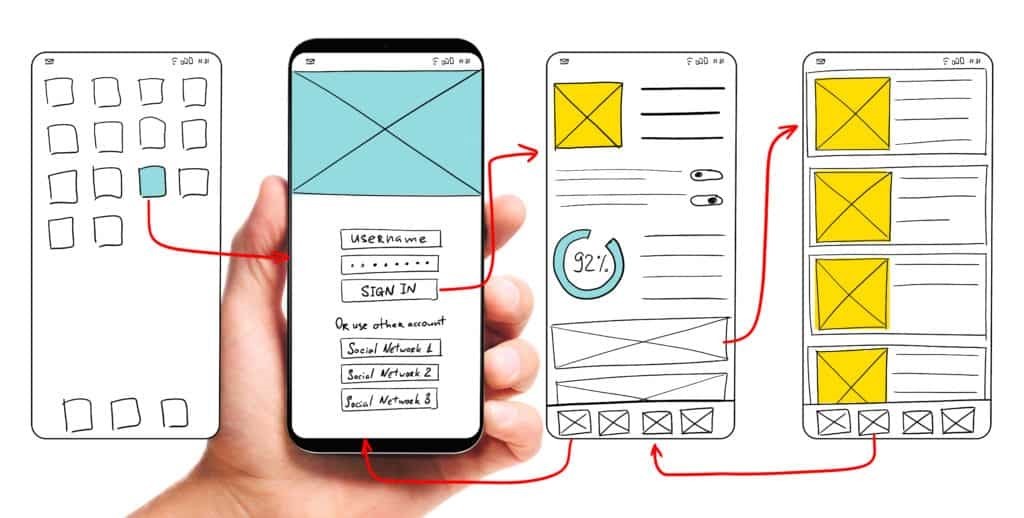
In the ever-evolving digital landscape, the success of your online business hinges on your ability to optimize your conversion rate. Among the myriad factors that influence this critical metric, User Experience (UX) design stands out as a linchpin.
In this comprehensive article, you will learn more about the pivotal role that UX plays in improving your conversions, exploring best practices, and providing actionable insights to ensure you are making the most of this powerful tool.
Table of Contents
Understanding UX and Conversion Rate

Source: blog.hubspot.com
In order to understand UX’s impact on conversion rates, you also need to know what these two crucial concepts mean in practice.
User Experience (UX):
UX encompasses the entirety of a user’s interactions with your website or application. It encompasses elements like design aesthetics, usability, accessibility, and, most importantly, user satisfaction. An exceptional UX ensures that visitors to your site find it not only functional but enjoyable to navigate.
Conversion Rate:
In the digital realm, the conversion rate is the percentage of visitors who take a desired action on your website. These actions could include making a purchase, signing up for a newsletter, requesting information, or any other activity that aligns with your website’s objectives.
A higher conversion rate signifies that your website effectively convinces visitors to take the desired actions, thereby achieving your goals.
The Inextricable Link Between Ux and Conversion Rate

Source: jeffbullas.com
- First impressions: It is often said that first impressions are the most lasting. A well-designed and user-friendly website creates an indelible positive impression. Visitors are more likely to linger and explore further when they find your site visually appealing and intuitively navigable. This initial engagement is the first pivotal step toward conversions.
- Clear Call-to-Actions (CTAs): UX design should place clear and enticing CTAs strategically throughout your website. An effective UX ensures that users can effortlessly spot and interact with these CTAs, ultimately leading to higher conversion rates. The art of guiding users gently through their journey is paramount to conversion success.
- The mobile revolution: With the widespread adoption of mobile devices, ensuring responsive design is no longer optional; it’s imperative. A stellar mobile UX enhances accessibility, ensuring that users can convert seamlessly, whether they are on a smartphone, tablet, or desktop computer.
- Frictionless experiences: An exceptional UX minimizes friction in the user journey. This involves simplifying forms, streamlining checkout processes, and eliminating any unnecessary steps that might discourage users from converting. Every click and every input required must serve a clear purpose, facilitating rather than hindering the conversion process.
- Building trust and credibility: A website that exudes professionalism and trustworthiness is inherently more likely to convert visitors. Elements such as aesthetic design, secure payment options, and transparent product/service information all contribute to building trust. Users are more likely to convert when they feel secure and confident in their interactions with your site.
- The science of A/B testing: UX design is a dynamic and iterative process. A/B testing, where you compare two versions of a webpage to determine which performs better, is a potent tool in your UX optimization arsenal. By experimenting with different design elements, layouts, and content, you can refine your site continuously to resonate better with your audience and, in turn, achieve higher conversion rates.
Maximizing UX for Conversion Rate Optimization

Source: forbes.com
To gauge whether you are harnessing UX to its fullest potential for conversion rate optimization, consider the following steps:
In-Depth Analytics:
UX agencies can dive deep into user behavior analytics using tools like Google Analytics. Professional companies like Ergomania UX Agency always keep your conversion rate in mind. They identify drop-off points and areas where users are abandoning the conversion process. This data is invaluable for pinpointing pain points in the user journey.
User-Centric Feedback:
Actively solicit feedback from users through surveys, feedback forms, or user testing sessions. This direct input from your audience provides invaluable insights into pain points and areas ripe for improvement.
Competitor Benchmarking:
Embark on a journey of competitor analysis. Study your competitors’ websites closely, dissecting their UX design strategies. Identify what they are doing exceptionally well and areas where you can outperform them. Benchmarking against the best in your industry can inspire innovation.
Continuous Evolution:
Recognize that UX design is not a one-time effort but an ongoing commitment. Stay attuned to UX design trends, evolving technology, and shifting user expectations. Continuously iterate and refine your website’s UX to stay ahead of the curve and improve your conversion rate.
Buyer Personas and User Testing:
Develop user personas to better understand your target audience. Conduct user testing sessions to put your designs to the test and gain direct insights into how real users interact with your website. This user-centric approach can unearth valuable opportunities for enhancing UX.







